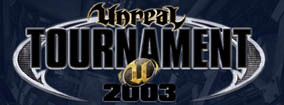Review: 20" LCD S-IPS Panels
Eizo L885: Games & Films
IPS technology is said to be better than TN and MVA due to its wider angles of vision and - this is what counts as far as games are concerned - in the response time that is supposed to be the same for all colors. That's without taking into account the fact that all the panels are 24-bit.
Yet this L885 is absolutely not recommended for games, because the picture lag is all too obvious.

Forget Unreal. If you're a fan, you may play a game or two on this monitor, but you'll soon find yourself searching for other ways of spending your time, because the lag is so visible. As soon as you move, everything goes out of focus.

It's not quite so fast as Unreal, so the lag is less of a nuisance, but you'll still find it hard to ignore. Why not play Solitaire instead?

This monitor doesn't rule out game-playing completely. GTA is playable. The lag is still there of course, but you can forget it if you get involved in the story.

As usual, this game is perfectly playable. At 1600x1200, the units are appreciably clear. For once, playing on this monitor is a very pleasant experience.

Surprise! We know this monitor is a 24-bit, but you'd swear if you were using it to watch movies that it was an 18-bit one, it flickers so much. Dithering is clearly in the air. When we contacted them, Eizo told us that they had indeed used dithering from 8 bits to10 bits for switching from one color to another in photography. So it seems as though a marketing ploy has turned against them, because the dithering technique produced some pretty poor results in this case. Added to that, the lag is dreadful here. It's out of focus and leaves multiple images on screen. In short, a pretty unpleasant experience.
Stay on the Cutting Edge
Join the experts who read Tom's Hardware for the inside track on enthusiast PC tech news — and have for over 25 years. We'll send breaking news and in-depth reviews of CPUs, GPUs, AI, maker hardware and more straight to your inbox.
It now remains to be seen whether the Philips 200P4 monitor succeeds where the L885 failed. Is its LG-Philips panel better than the one designed by Sharp? Is the 16ms response time better than Eizo's 20ms?
Most Popular

